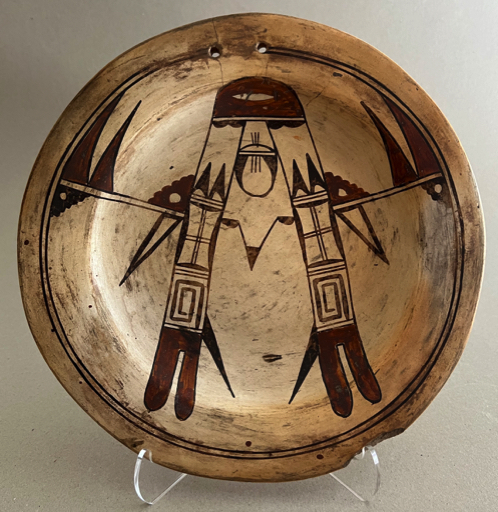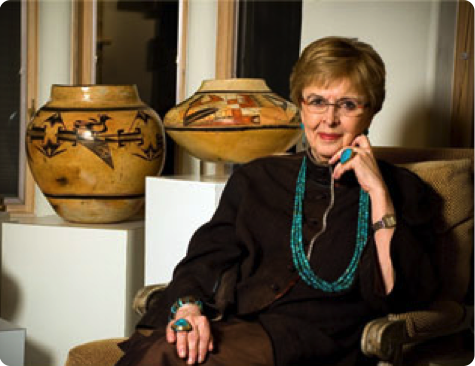
© 2010-2024 by Fine Arts of the Southwest, Inc. All rights reserved.
Unauthorized reproduction or use is strictly prohibited by law.
An exceptional historic Hopi “Sikyatki-Revival” style polychrome pottery hanging plaque or plate by Nampeyo of Hano, c. 1900
ex: Martha H. Struever Collection, Santa Fe
This beautiful piece of pottery has a somewhat distinguished history, it was formerly owned by two of the Southwest’s foremost experts on Pueblo Pottery, both of whom fittingly also happened to be women as Pueblo pottery has long been the province of women with as creators and admirers.
Nampeyo of Hano (1859-1942) the Matriarch of modern-day Hopi pottery, who made this exquisite plaque or plate was of course its first owner. The second owner whom we know of was our longtime friend and colleague, the late great Santa Fe Native Arts dealer and collector, Martha H. Struever (1931-2017) who acquired it sometime in the late 1970's or early 1980’s and kept it in her private personal pottery collection until her death in 2017 after which it was sold by her estate. There are two identical Struever Collection numbers "M2991" written in pencil in Marti's highly distinctive cursive hand (a hand we know very well having seen it a great many times over the many years we knew her) on the back of the plaque along with the two different late 1970's-early 80's era prices of "$1,800" and "$3,600". This suggests to us that Marti actually owned this piece twice having sold it once and subsequently gotten it back by trade or purchase at somewhat later time. It's an interesting small personal touch which adds nicely to the historic nature of the piece.
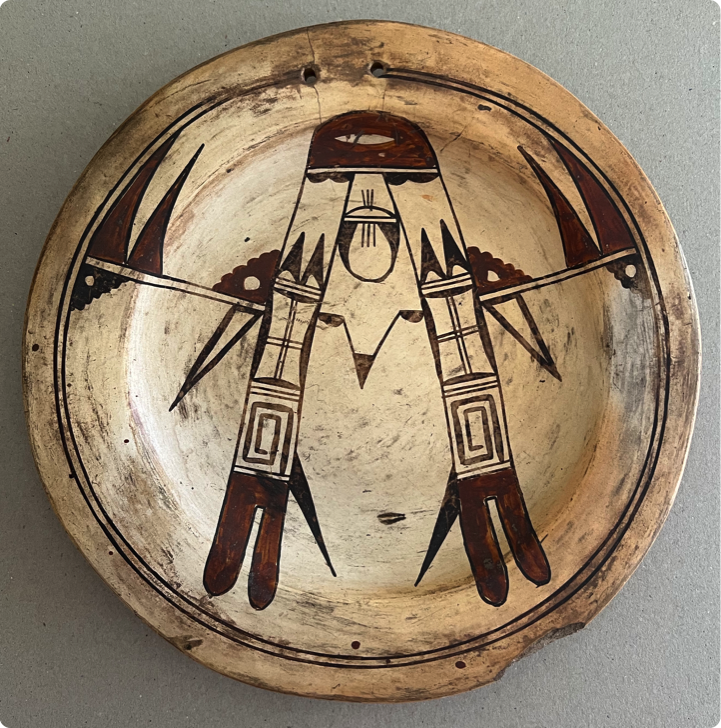
“When I first began to paint, I used to go to the ancient village and pick up pieces
of pottery and copy the designs. That is how I learned to paint. But now, I just close my eyes and see designs and I paint them."
-Nampeyo
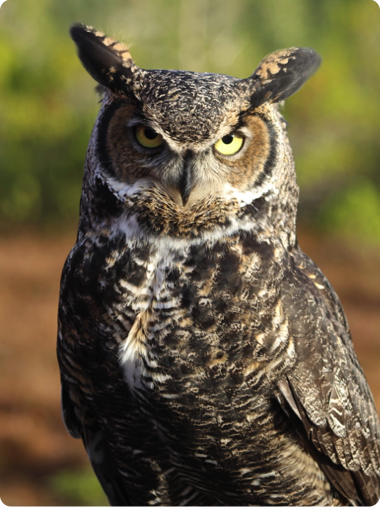
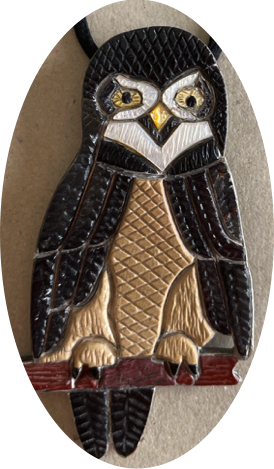
"Bubo Virginianus", The Great Horned Owl.
Photo source and © The Alaska Raptor Center
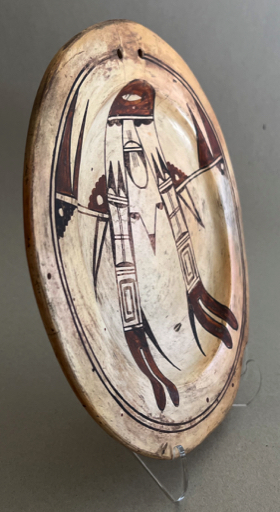
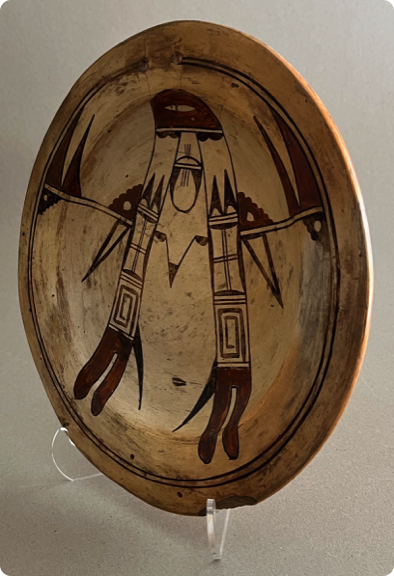
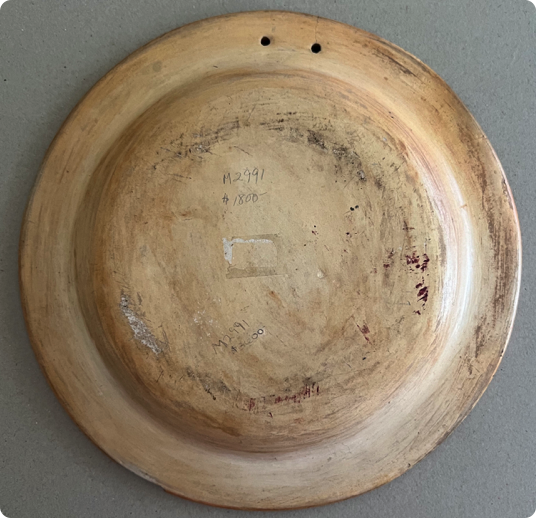
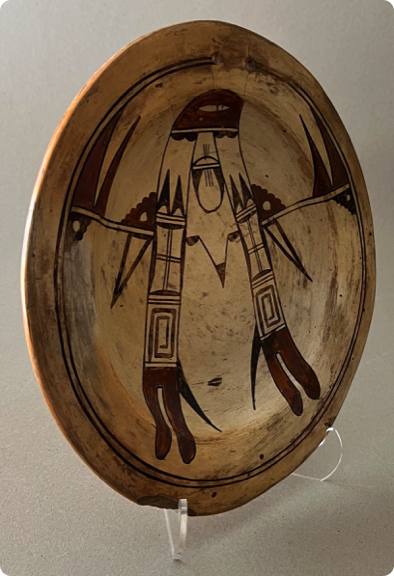
Nampeyo channeled the ancient ones through her own remarkable creativity and technical proficiency to create extraordinarily modern-looking almost shockingly original designs as seen in this plaque. The design somewhat resembles a stylized depiction of the figure of a great horned owl as shown above. Whether or not this is true is impossible to know for certain but Sikyatki-Period pottery is very well known for its stylized and abstracted depictions of birds and other animals, actual or in some cases, mythological beings.
The symmetrically-opposed paired design motifs of the central figure, the streaky red paint, the clown face or “kilroy” motif in the center of the design, the exceptionally well executed all over stone polishing of the vessel and the perfectly achieved high-temperature firing with Hopi Lignite coal and the resulting whitish-yellowish-pinkish firing “blushes” on the vessel are all telltale “signatures” of Nampeyo’s master hand.
This piece is an old and artistic pottery masterpiece which shows its age and its various bumps and bruises most beautifully and proudly. It is a creative and technical achievement of the highest order and would and should be
a treasured piece in any collection anywhere.
Price $6,950

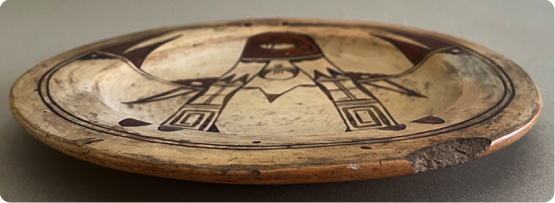
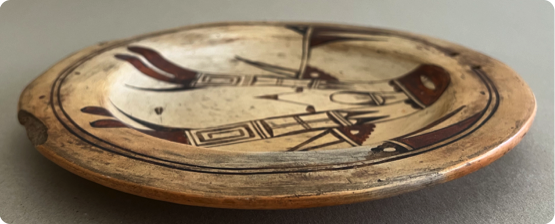
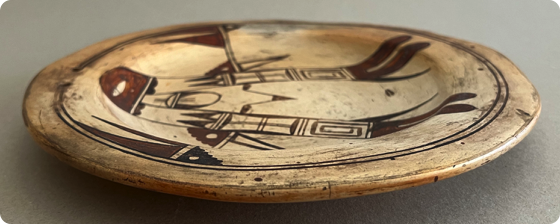
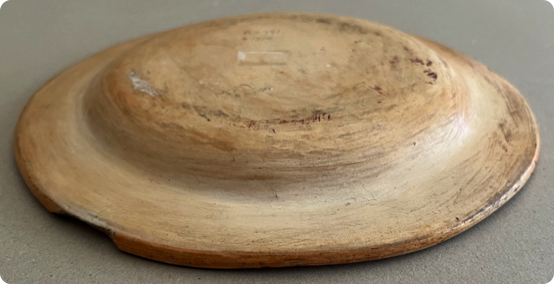
The plaque measures a very nicely sized 9 1/2" in diameter and is approximately 1" in depth. It is in fairly good original condition for its 125 or so years of age, but it definitely shows it age with two small cracks around the hanging holes
at the top edge of the plaque, some various surface abrasion wear and scratches, staining and slight paint loss. There is also an old approximately 1” length chip at the lower right edge of the piece. All that said, we wouldn’t touch it one bit as far as restoration goes as we believe its complete originality adds immeasurably to its extreme authenticity and the powerful story of the long life it has lived under some extremely adverse conditions in the harsh climate and terrain of the desert Southwest.
In our view, this is precisely the sort of piece that should be admired and cherished for just what it is; when, where and by whom it was made and owned and how it eventually made its way to where it is at present. In this way, it is no less than a nutshell visual and cultural presentation of the entire sweep of the modern day history, recording and understanding of the ancient Southwest. It’s maker, the now world-renowned pottery Master, Nampeyo, made it around 1900 as part of her “revival” of the legendary ancient Hopi style of Sikyatki polychrome pottery (1375-1625 A.D.) which was renowned everywhere it was known from the late 14th century onwards and which is even more renowned around the world today as one of the finest, most original, most strikingly beautiful types of pottery ever created anywhere.
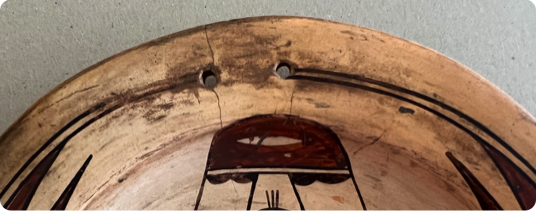
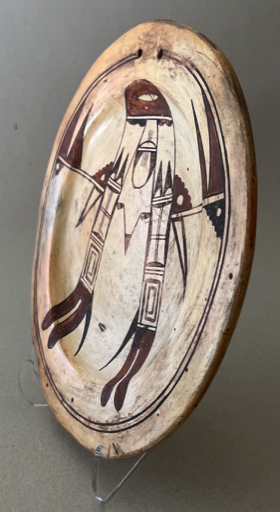
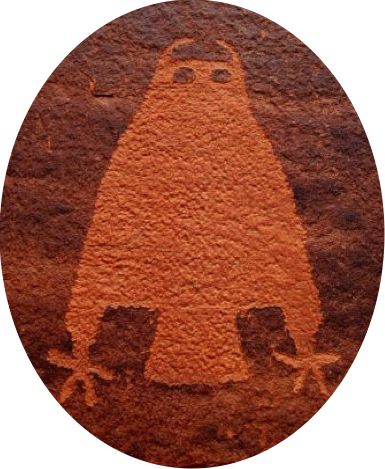
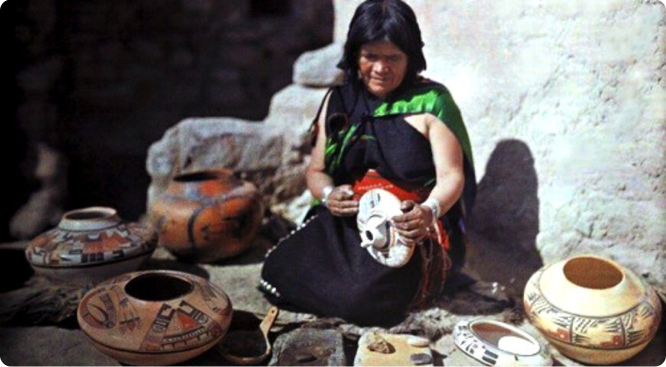
Owl Imagery in Southwestern Native American Art
Owl imagery abounds in Southwestern Native American art. Owls were historically and are still today widely considered to be very
powerful, sometimes controversial figures, symbols of strength and wisdom, harbingers of doom or evil, even witches in disguise.
As such powerful symbols, they have been variously depicted in many forms of Southwestern Native American art over the centuries such as the ancient rock art panel at above left to the historic Hopi Polychrome pottery figurative owl canteen at above right to the modern-era Zuni Pueblo inlaid silver pendant at above center.
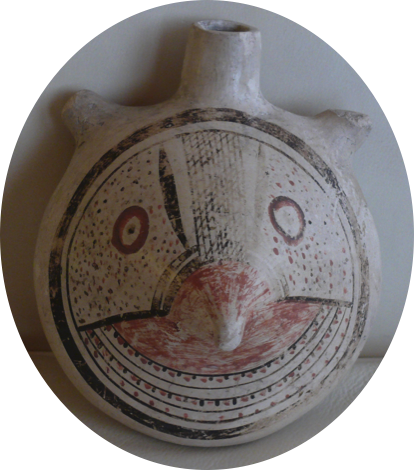
Two of the previous owners of this pottery plaque. At left, Nampeyo making Sikyatki-Revival style pottery c. 1905. Notice the jar with a similar stylized owl motif in front of her. At right, Martha H. (Marti) Struever (1931-2017).
Left photo source and © Suduva. Right photo source and © marthastruever.com
